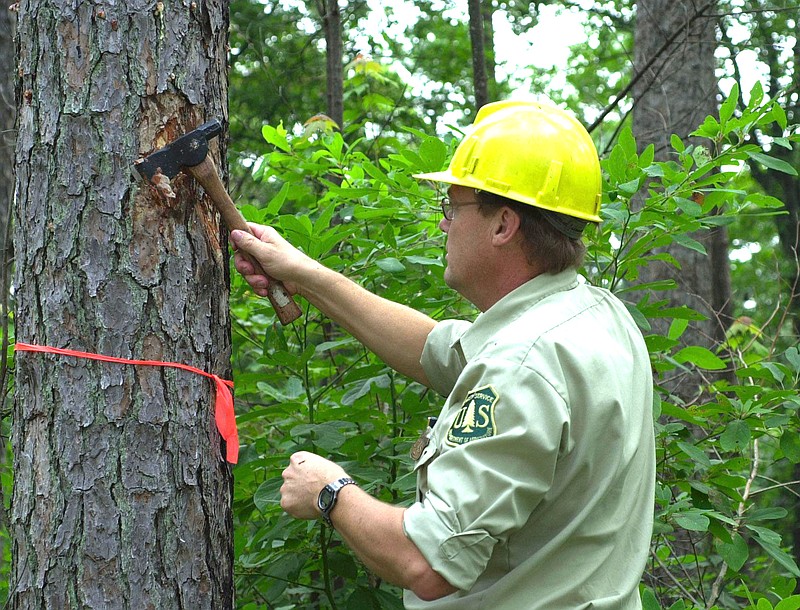BIRMINGHAM, Ala. - A full-grown Southern pine beetle is still about half the length of a grain of rice, but state and federal forestry officials worry this tiny bug could have a monster impact this year on the state of Alabama's $11 billion wood products industry.
"With Southern pine beetles, the Latin name (Dendroctonus frontalis) actually means tree killer, and it is," said Edward Loewenstein, associate professor of silviculture at Auburn University's School of Forestry and Wildlife Sciences. "It is well-suited to take trees out."
This year's concerns are rooted in the large number of trees left stressed or already dying from last year's record-setting drought. Drought-stressed trees don't make sap as well as healthy ones, and that sticky sap is the tree's primary defense against beetles.
"We're in crisis right now because any organism that's under stress is less able to deal with stress, and all of our pine beetles, bark beetles are stressors to trees," Loewenstein said. "When you've got this extraordinary drought like we had this past year, that is a huge stressor put on not only individual trees but entire stands and entire landscapes."
The results can be devastating to forest industries. The U.S. Department of Agriculture estimates a widespread outbreak that begin in 1999 in east Tennessee caused more than $1 billion in timber losses.
Foresters fear the dead or dying trees left by the drought could provide fuel for a similar large-scale infestation, and are already seeing evidence of increased beetle activity, even though outbreaks usually don't flare up until the late spring or early summer.
"Normally in the winter you don't see a lot of dying pines and beetle activity, but we're seeing that a lot more this year," said Tim Albritton, staff forester with the U.S. Department of Agriculture's Natural Resources Conservation Service in Alabama. "We can tell this year is building up to be a pretty bad year for beetles."
Foresters from the Alabama Forestry Commission, the USDA, the Auburn University School of Forestry, Alabama Farmers Federation and various private entities met in Montgomery last week to discuss how to handle the situation and share information about the extent of the problem, and are planning regular coordinated efforts among government agencies and private landowners to minimize the damage.
John Goff, director of the Forestry Commission's Forest Protection Division, said during the meeting that the Commission began taking flights in February to look for beetle damage in Alabama's forests and have already discovered 187 likely beetle infestations affecting 14,262 trees.
"We think the stars have aligned and we have the definite potential for major outbreaks this year," Goff said.
The Forestry Commission usually doesn't start logging flights to look for beetle damage until May or June, but started early this year, in part due to the large number of calls the commission is getting from landowners to report possible infestations.
"Our phones are blowing up," said Mark Martin, assistant forest health coordinator for the agency. "We're getting calls left and right, every day."
The number of beetle infestations has climbed for the last four years even without a major drought, and state forestry officials fear this year could be the worst in memory for Southern pine beetles.
Goff said the commission identified 109 Southern pine beetle outbreaks in 2013; 168 in 2014; 378 in 2015; and 691 last year.
The usual recommended course of action for a Southern pine beetle infestation is to clear a buffer area around the infested trees at least as wide as the tallest trees in the infested group to prevent the beetles from spreading. Those trees can be burned or simply left behind a safe distance from healthy forest trees.
An outbreak could hurt wallets as well as forests.
Alabama's forest products industry is a major economic engine in the state, and by some metrics is the largest industry in the state. Alabama is second in the country in production of pulp and paper and No. 7 in lumber production.
According to a report by Auburn University and the Alabama Cooperative Extension Service, Alabama produced more than $10 billion in forest products in 2010 and more than $11 billion when you include commercial logging products.
The study found more than 23,000 direct jobs created by Alabama's forest products industry, and indirect employment impact of more than 110,000 jobs.
